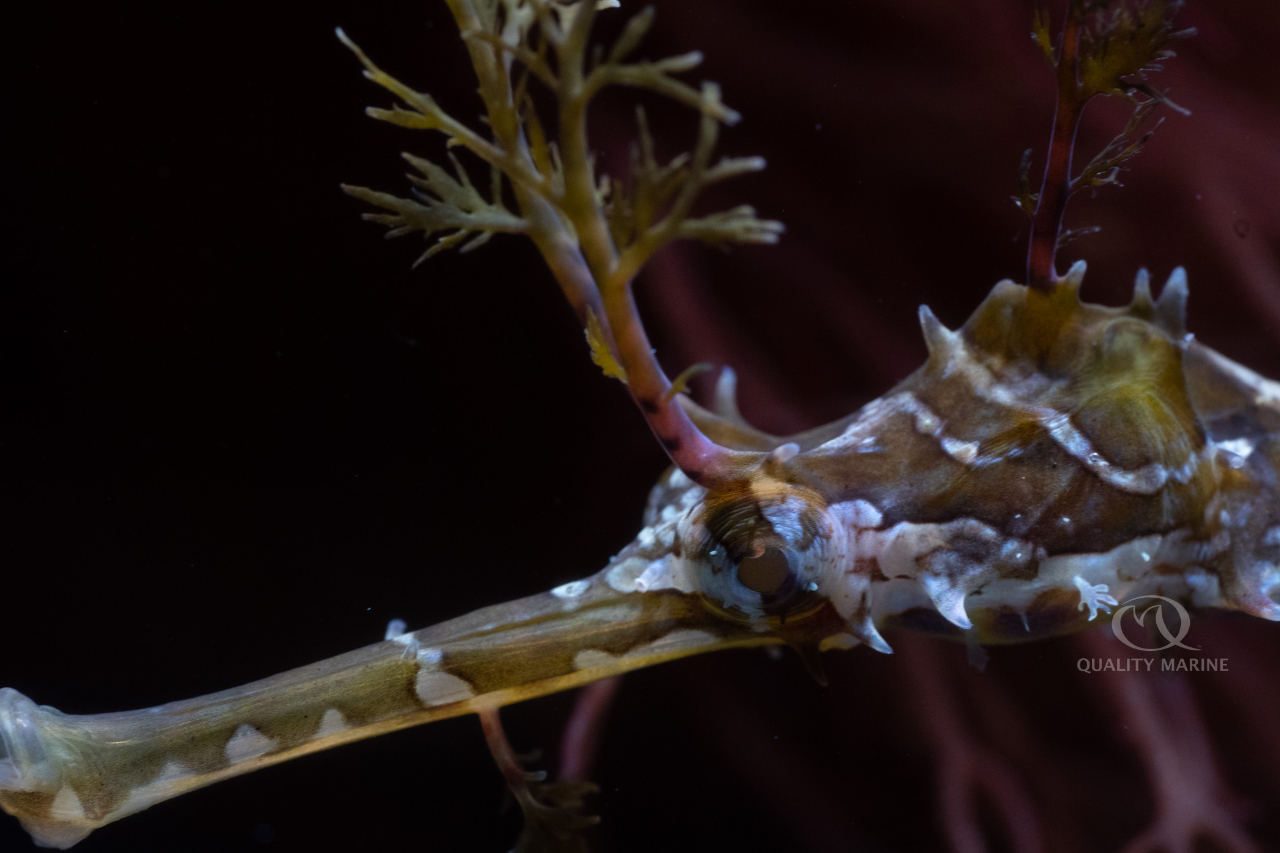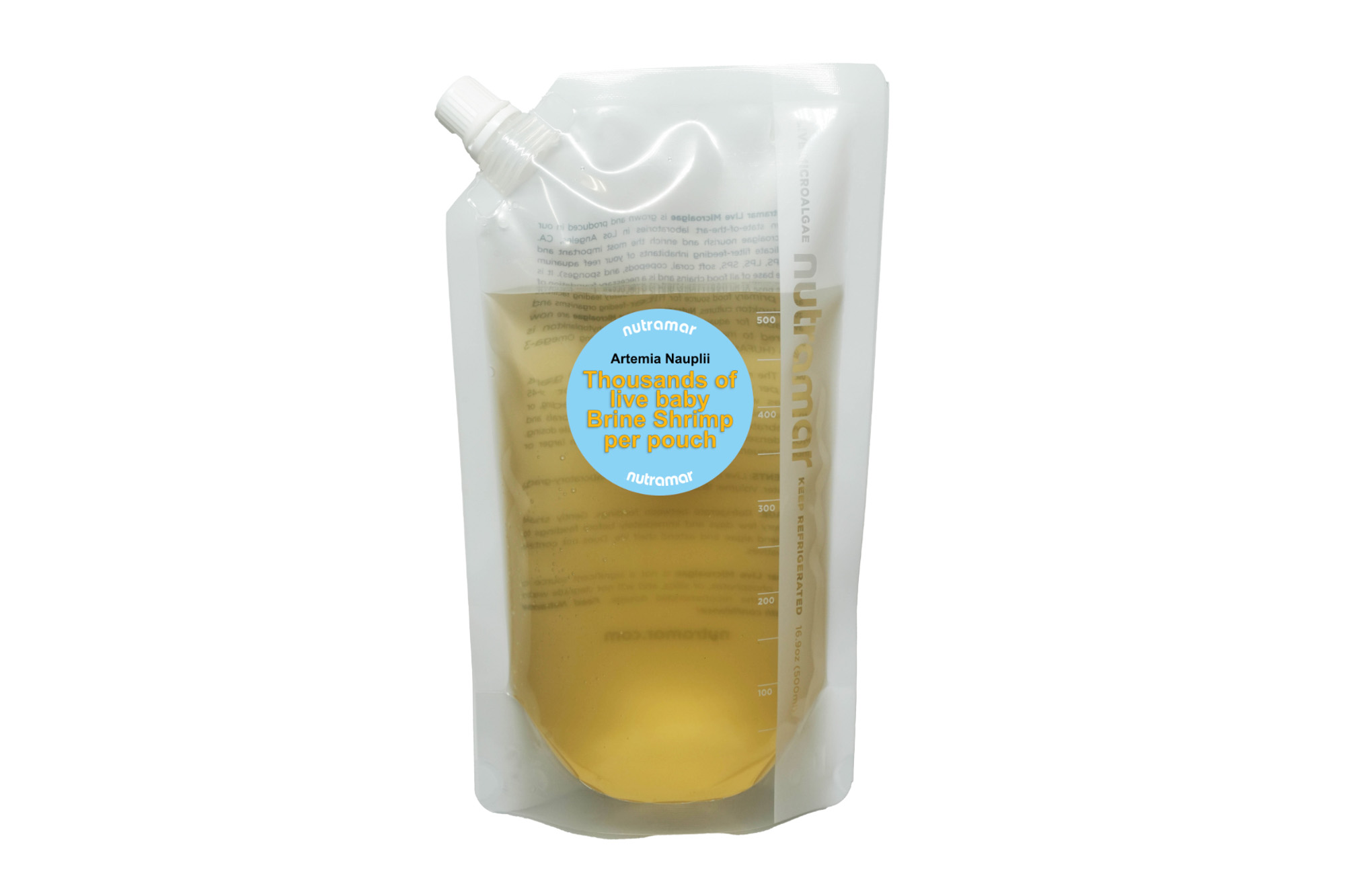Really Righteous Ribbons (Pipefish, Actually)

Haliichthys is a genus that has only one fish in it, which is interesting because the word Haliichthys is rooted in two Greek words that translate roughly as “salt fish.” That's a pretty wide descriptor for a genus with only one fish. That one fish is a beauty though. Haliichthys taeniophorus is most often called the Ribboned Pipefish; it also gets called the Shredded Pipehorse, Ribboned Pipehorse, and Ribboned Seadragon, even though it is not a true Seadragon. As a side note, there are only three species of Seadragon (Phycodurus eques, Phyllopteryx taeniolatus, and Phyllypteryx dewysea - Leafy, Weedy, and Ruby respectively).
While not quite as ornate as some of the “True” Seadragons, the Ribboned Pipefish is still quite ornate; their colors range from lime green to dark brown to burnt red, and they have random blotches of lighter color all over their body. Their fins are shaped like frilly leaves as are the rest of the camouflaging protrusions called “leaflets” further enhancing their natural camo. Another difference between Seadragons and Haliichthys taeniophorus is the latter have a prehensile tail allowing them to grab onto anything thin enough to get their tail around so they can stay in place and hunt.
The tropical waters of Indonesia and Northern Australia make up the primary range of the Ribboned Pipefish. The lightest colored specimens (especially the bright green ones) are usually found in the shallowest water, often in areas of dense algal growth and seagrass beds where their natural camouflage is the most advantageous. Regardless of their color, they almost always found in less than 50 feet of water.
 Pipefish, like seahorses, don't need a ton of room in a home aquarium; in some ways bigger displays are actually detrimental to their husbandry. When you scour the internet for tank size tips regarding this species, you'll see some recommendations for surprisingly large water volumes. These recs are totally rooted in the stability that big tanks offer, the downside of this is that bigger displays make it harder to target feed the fish (more on this later). A better solution if you struggle with stability in your smaller system, is to utilize an oversized sump and perhaps a refugium which will increase volume while adding a source of natural food! A good tank size for a single individual or even a pair could be as small as 40 gallons, which seems miniscule for a fish that gets almost a foot long! But this fish just doesn't need to move around that much. Tanks don't need to be covered, but heaters should either be covered or located in areas that are not accessible by the Pipefish to prevent them from burning themselves. Aquariums should have quite gentle, but random, turbulent flow. Give your fish things to grab onto, whether this is branch rock, decorative algae, mangrove roots, seagrass, or even driftwood a good proportion of your décor should be something for your fish to grab onto!
Pipefish, like seahorses, don't need a ton of room in a home aquarium; in some ways bigger displays are actually detrimental to their husbandry. When you scour the internet for tank size tips regarding this species, you'll see some recommendations for surprisingly large water volumes. These recs are totally rooted in the stability that big tanks offer, the downside of this is that bigger displays make it harder to target feed the fish (more on this later). A better solution if you struggle with stability in your smaller system, is to utilize an oversized sump and perhaps a refugium which will increase volume while adding a source of natural food! A good tank size for a single individual or even a pair could be as small as 40 gallons, which seems miniscule for a fish that gets almost a foot long! But this fish just doesn't need to move around that much. Tanks don't need to be covered, but heaters should either be covered or located in areas that are not accessible by the Pipefish to prevent them from burning themselves. Aquariums should have quite gentle, but random, turbulent flow. Give your fish things to grab onto, whether this is branch rock, decorative algae, mangrove roots, seagrass, or even driftwood a good proportion of your décor should be something for your fish to grab onto!
Water quality wise, these fish will do best in very stable environments. You want a pH that is consistent somewhere around 8.2, a specific gravity around 1.025 and nutrient levels that stay low, shoot for nitrates under 2ppm. Consistent, large water changes with well-conditioned water is a part of keeping any Pipefish, Seahorse or Seadragon, and you should be ready to do so for these fish as well. Haliichthys taeniophorus can be kept in water anywhere from 70 to 78 degrees Fahrenheit, but whatever temp you pick should be stable.

It is feeding the Ribboned Pipefish represents perhaps the greatest challenge in regard to their successful husbandry. They are not adept swimmers and will not be able to chase down prey very well, which is one of the primary reasons we recommend keeping them in smaller displays, with gentle flow. This combination of factors will help the home aquarist to get more food into the Pipefish's range more easily. New fish will sometimes require live food to get them started eating, and they will greedily take things like live Nutramar Artemia, live tubifex or when available, live mysis. We have a series of article on the site here about raising a wide variety of homegrown foods. Over time, Haliichthys taeniophorus can be conditioned to take thawed foods, by consistently offering things like Gamma Bloodworms, Mysis and a selection of gut loaded brine along with any live food you offer. Here they get three meals a day, and this is our suggestion as a minimum for you as well. In each feeding, feed them a small amount and wait for them to consume it, then feed a bit more. Many aquarists will dose this food with a baster which also helps direct it into the feeding zone of the Ribboned Pipefish. Once they are accustomed to thawed foods, they accept it consistently and easily. They should always be the only fish in the display as they can / will be easily outcompeted for food.
Haliichthys taeniophorus has been bred in captivity, and for the experienced hobbyist, this is a possibility and opportunity for you at home. Currently, they are almost never available on an aquacultured basis. If you have a pair sexually mature ones, that are well fed and happy in an established display, they are likely to reproduce without any interference. The females have a specialized organ called a “ovipositor” that they use to deliver a huge number of eggs to the brood pouch of the male where the eggs are fertilized and carried for two weeks or so, he can them give birth to 500-1000 fully developed (but really small) babies! The real challenge of this process will be keeping the babies well fed. They will likely need to be removed to smaller, even gentler confines with very high food density.
To make a long story short, Haliichthys taeniophorus is one of the coolest looking fish in the sea, and in the home aquarium, would make one of the most stunning wet pets a fish geek could imagine. That being said, this is not a fish for a new hobbyist with a new tank; this is a fish for an experienced aquarist who is looking for a different kind of marine display, with one of the aquarium world's neatest oddball fish inside it. Head to your LFS and ask them about getting you a Ribboned Pipefish from Quality Marine today!